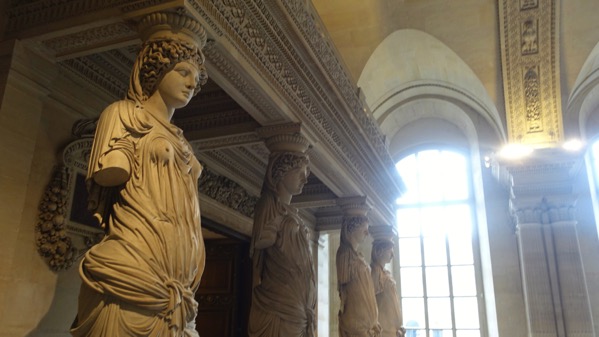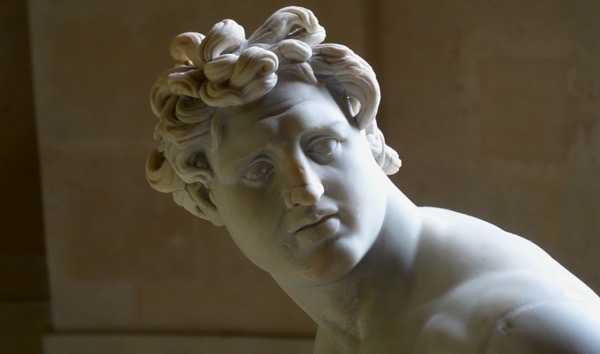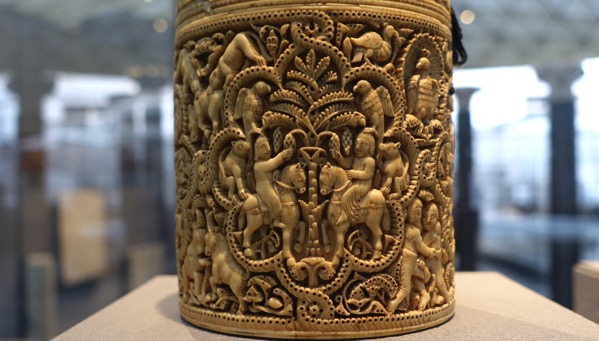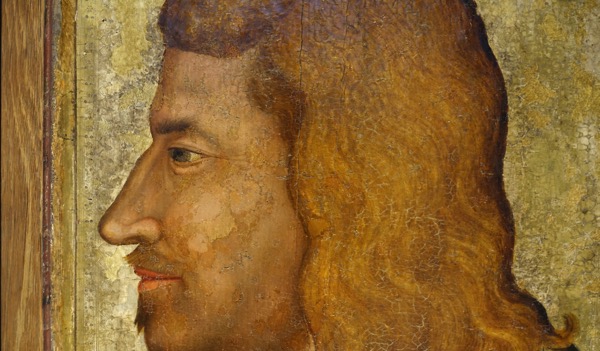We Looooov(r)ed
Monday, 12 March 2018

Back to the Louvre neighborhood to “do” the Louvre…that is, to browse a few galleries. There are three main sections, and we only hit parts of two. The Louvre is huge, and my poor brain can only take in so much.

Bam! First objects: caryatids. They are gigantic. And the ladies’ breasts are at armpit level and consequently look strange…from today’s display angles, maybe not when they high on a building.

Called Wounded Gaul or Gauloise blessé, (the original of) this statue came from the Acropolis in Athens. It commemorated the victory of Attalus I, king of Pergamum, over Celtic warriors who threatened his territory in what is now Turkey in 200/199BC. This is a Roman copy of one figure from the lost bronze Greek statue group. Love the wild hair.

Called Aphrodite of Milos and Venus de Milo, this statue of an unknown goddess compels the eye. The aesthetics of the features and pose seem to date it to the 5th C BC; however, the elongated body and the sinuous pose are later—3rd to 1st Cs BC. So says the Louvre‘s specialists.

This bit of Coptic fabric dates to the 6th/7th C. Always amazed when organics are preserved, so against the odds! The fibers are linen and wool.

This carved vessel type is a pyxis; a pyxis is cylindrical, with a separate piece as a lid. The earliest are of wood (hence the shape, I assume). This one is of ivory and dates to the late 700s. It is Islamic style, and came from Spain. The figures are picking dates, and this likely symbolized the dynasty of its owner, back in the Levant. So says the Louvre’s specialists.

This scene is atop the famous basalt stela that is carved with Hammurabi’s code and dates to the 18th C BC. It portrays Hammurabi being awarded his royal insignia (aka investiture) by the solar deity Shamash. Hammurabi is holding his hands over his mouth, signaling that he is praying or honoring the deity. Most of the stela is covered almost everywhere with small symbols that are cuneiform script in Akkadian, then the dominant language in Mesopotamia (e.g., Babylonia).

Switching gears: scary cat!

This is King John II of France, aka Jean le Bon. He lived from 1319 to 1364. The Louvre’s people note that this is “believed to be the oldest conserved example of an independent portrait since antiquity.” I guess that means in the Western world. Since he isn’t wearing a crown it probably dates to before he ascended the throne in 1350.

Okay, enough of the energy-intensive art objects! On to…see the logo to the right? Yup, on to the Apple store in the shopping area underground west of the museum.

A time jump, and we entertained! Relatives! Such fun!
I had stuffed morels, very dainty and exceedingly tasty. Thankfully, my SIL had a huge platter of coq au vin that she shared, or I would have been…well, not hungry exactly, but definitely not as sated. Of course, the dessert souffle trio would have helped fill me!
Lovely meeting up for the evening!